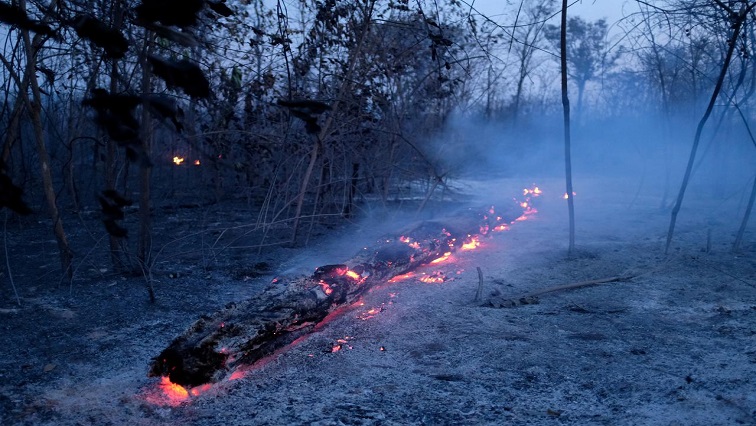Fires in the Amazon rainforest will likely become more severe, frequent and widespread in future unless action is taken to stem rising deforestation and climate change, scientists warned ahead of Friday’s regional summit aimed at tackling the problem.
In Brazil, home to the biggest share of the world’s largest rainforest, blazes have nearly doubled so far this year compared with 2018, while fires are also burning in neighbouring Bolivia.
Last month, Brazil’s space research agency, INPE, said the number of fires in the Amazon was the highest since 2010, sparking international calls for protection to be stepped up.
Researchers said agricultural expansion deeper into Amazon forest areas and droughts linked to global warming would likely spur more fires in the fragile ecosystem.
“There is a clear correlation between the number of days without rain, the scale of deforestation, and the number of forest fires,” said Andre Guimaraes, head of the non-profit Brazil-based Amazon Environmental Research Institute (IPAM).
Leaders of nations that are part of the Amazon basin are meeting in the Colombian border town of Leticia on Friday to discuss how best to stem tree loss and fires in the rainforest, which stores planet-warming carbon and is seen as a vital buffer against climate change.
The presidents of Colombia, Peru, Ecuador and Bolivia are attending, along with Suriname’s vice-president.
Brazil’s President Jair Bolsonaro cancelled travel plans due to surgery but will join via video link and is sending a delegation headed by his foreign minister.
Colombia hopes the meeting will agree on a regional action plan – the Leticia Pact for the Amazon – to protect the rainforest and promote its sustainable use.
Colombian Environment Minister Ricardo Lozano said it would aim to take into account “extreme events and high temperatures”.
LESS ‘FIRE-IMMUNE’
In Brazil’s Amazon forest, deforestation declined sharply between 2004 and 2012, after which the rate began trending upward again – and other Amazon nations are also seeing a rise.
More trees are being cut down or burned to open up land for agriculture and cattle ranching, along with illegal mining and logging that is going unchecked, environmentalists say.
When patches are cleared in the forest, it becomes more prone to catching fire, said Mark Cochrane, a professor at the University of Maryland Center for Environmental Science.
“Once you start building roads, you connect that landscape, so fires can go through the grass,” he said.
Forests that have been damaged or cut down have holes in their canopy, as well as more edges that “bleed moisture”, drying them out and increasing the risk of fires, Cochrane said.
“Once you damage those forests, they are not as fire-immune as they were. So instead of needing months without rain, you only need a couple of weeks,” he added.
IPAM’s Guimaraes said worsening drought was making the forest drier too, hiking the fire threat.
“The fluctuations in the moisture in the Amazon are becoming more and more dangerous because of climate change,” he said, adding drought was now happening there in a way not seen in previous decades.






